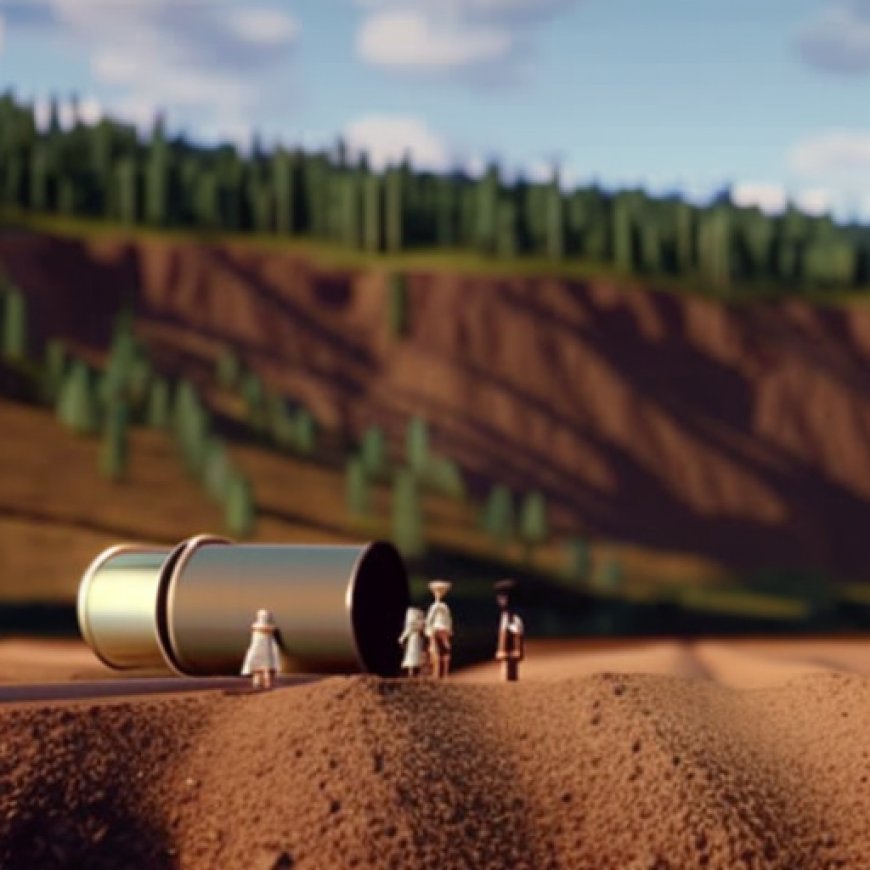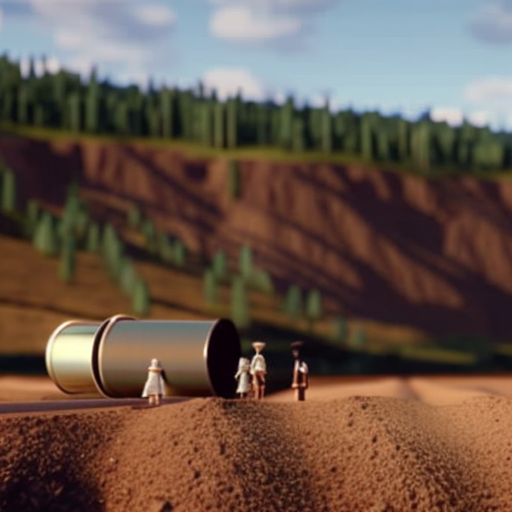LETTER TO THE EDITOR: Enbridge’s impact on Minnesota aquifers
LETTER TO THE EDITOR: Enbridge's impact on Minnesota aquifers Bemidji Pioneer


Aquifer Health and the Impact of Enbridge’s Line 3 Pipeline Replacement Project
Aquifer health is critical to both well owners and farmers dependent on irrigation. Michael Johnson’s March 11 piece argued farmers are not excessively draining aquifers.
Yet, in 2023, MPR reported wells went dry during the 2021 drought because of excess irrigation pumping.
Long-Term Aquifer Damages Caused by Enbridge’s Line 3 Pipeline Replacement Project
Less well known are long-term aquifer damages created by Enbridge’s Line 3 Pipeline Replacement Project. State regulators have failed to assess construction damage and report to the public.
Northern Minnesota is full of surficial aquifers. Communities near the pipeline route might consider whether Enbridge’s construction affected local hydrology, bringing problems usually blamed on drought or excess irrigation.
Enbridge’s expert, Barr Engineering’s Ray Wuolo, testified during permitting, “Limiting the depth of sheet piling to approximately 20 feet should prevent penetrating into the underlying pressurized deposits.”
Construction Damage and Aquifer Breaches
Enbridge went deeper anyway, pounding 30-foot steel pilings deep into the ground to support their pipeline trench during construction. These pilings were subsequently found responsible in each of four aquifer breaches reported to date: Clearbrook, LaSalle, MP 1102.5 (Fond du Lac Reservation), and Moose Lake (Aitkin County).
More than two years post-construction, damages are still being found.
A Jan. 30 Waadookawaad Amikwag webinar shared video footage of 11 damage sites still unaddressed, including five more potential breaches and documenting 90-degree water emerging at the pipeline.
Excessive Water Appropriations and Criminal Charges
Adding insult to injury, five days after bursting the Clearbrook aquifer, Enbridge requested a ten-fold increase to their water appropriations permit (from 510 million to almost 5 billion gallons).
The Minnesota DNR approved the increase in June 2021, days before learning of the ongoing excessive water, still flowing at Clearbrook, which sparked an investigation.
In October 2022, Enbridge was criminally charged for illegally appropriating state waters at Clearbrook. These charges were continued for dismissal, after one year, assuming Enbridge remained “law-abiding.”
In July 2023, community science group Waadookawaad Amikwag revealed evidence of the Moose Lake aquifer breach forcing Enbridge and the Minnesota DNR to admit a fourth breach.
Failure to Report Damages
When Judge Tiffany dismissed Enbridge’s charges on Feb. 5, 2024, we wondered, “How was Enbridge’s continued and ongoing failure to report damages to our state waters considered ‘law-abiding’?”
Eight suspect damage sites have been provided to state agencies and the Attorney General of Minnesota, yet the group documenting them, and those who sued to prevent the dismissal of Enbridge’s criminal charges, continue to hear no response.
Conclusion
Aquifer health and the impact of Enbridge’s Line 3 Pipeline Replacement Project are significant issues that need to be addressed. It is crucial to prioritize the Sustainable Development Goals (SDGs) in order to ensure the sustainable management of water resources and protect the environment.
For more information, visit www.WaadookawaadAmikwag.org and watch videos of the damages and impacts at the Waadookawaad Amikwag YouTube channel.
SDGs, Targets, and Indicators Analysis
1. Which SDGs are addressed or connected to the issues highlighted in the article?
- SDG 6: Clean Water and Sanitation
- SDG 13: Climate Action
- SDG 15: Life on Land
The article discusses issues related to aquifer health, excessive water pumping, and construction damage caused by Enbridge’s Line 3 Pipeline Replacement Project. These issues are connected to SDG 6, which aims to ensure availability and sustainable management of water and sanitation for all. The article also mentions the 2021 drought, which is linked to climate change, falling under SDG 13. Additionally, the construction damage affecting aquifers and local hydrology relates to SDG 15, which focuses on protecting and restoring ecosystems and biodiversity.
2. What specific targets under those SDGs can be identified based on the article’s content?
- SDG 6.4: By 2030, substantially increase water-use efficiency across all sectors and ensure sustainable withdrawals and supply of freshwater to address water scarcity.
- SDG 13.1: Strengthen resilience and adaptive capacity to climate-related hazards and natural disasters in all countries.
- SDG 15.1: By 2020, ensure the conservation, restoration, and sustainable use of terrestrial and inland freshwater ecosystems and their services.
The article highlights the excessive pumping of water during the drought, indicating a need to improve water-use efficiency (SDG 6.4). The construction damage caused by Enbridge’s pipeline raises concerns about the resilience and adaptive capacity of the affected ecosystems (SDG 13.1). Furthermore, the breaches in aquifers and the potential harm to local hydrology emphasize the importance of conserving and restoring terrestrial and freshwater ecosystems (SDG 15.1).
3. Are there any indicators mentioned or implied in the article that can be used to measure progress towards the identified targets?
- Water-use efficiency: The article mentions excess irrigation pumping during the drought, indicating a potential indicator of inefficient water use.
- Climate-related hazards: The article refers to the 2021 drought, which can be considered an indicator of climate-related hazards.
- Conservation and restoration of ecosystems: The breaches in aquifers and the potential harm to local hydrology serve as indicators of ecosystem degradation.
The article provides examples of indicators that can be used to measure progress towards the identified targets. These indicators include water-use efficiency, climate-related hazards, and the conservation and restoration of ecosystems.
Table: SDGs, Targets, and Indicators
| SDGs | Targets | Indicators |
|---|---|---|
| SDG 6: Clean Water and Sanitation | 6.4: By 2030, substantially increase water-use efficiency across all sectors and ensure sustainable withdrawals and supply of freshwater to address water scarcity. | – Excessive irrigation pumping during the drought as an indicator of inefficient water use. |
| SDG 13: Climate Action | 13.1: Strengthen resilience and adaptive capacity to climate-related hazards and natural disasters in all countries. | – The 2021 drought as an indicator of a climate-related hazard. |
| SDG 15: Life on Land | 15.1: By 2020, ensure the conservation, restoration, and sustainable use of terrestrial and inland freshwater ecosystems and their services. | – Breaches in aquifers and potential harm to local hydrology as indicators of ecosystem degradation. |
Behold! This splendid article springs forth from the wellspring of knowledge, shaped by a wondrous proprietary AI technology that delved into a vast ocean of data, illuminating the path towards the Sustainable Development Goals. Remember that all rights are reserved by SDG Investors LLC, empowering us to champion progress together.
Source: bemidjipioneer.com

Join us, as fellow seekers of change, on a transformative journey at https://sdgtalks.ai/welcome, where you can become a member and actively contribute to shaping a brighter future.







